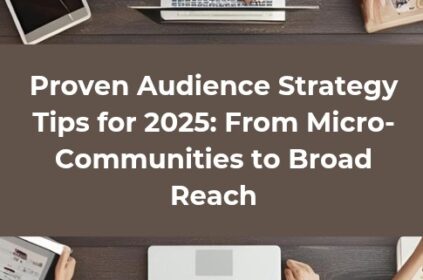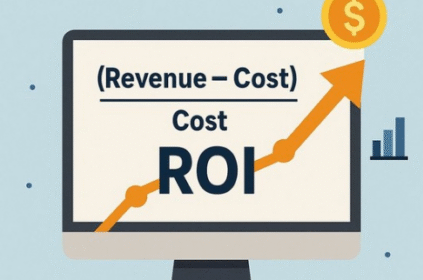In today’s digital age, advertising has become an integral part of business growth and brand visibility. Facebook, with its massive user base and detailed targeting options, has emerged as a go-to platform for online advertising.
But if you’re new to Facebook advertising, one of the most crucial aspects to grasp is the cost associated with running ads on this platform.
In this comprehensive guide, we’ll break down Facebook advertising costs for beginners, helping you navigate this complex landscape with confidence.
How Facebook Advertising Works
Before diving into the costs, it’s essential to understand the basics of how Facebook advertising works. Facebook offers various ad formats, including image and video ads, carousel ads, and more.
These ads can appear in users’ News Feeds or on the right-hand column of the desktop site. Additionally, Facebook-owned platforms like Instagram and Messenger can be part of your advertising strategy.
The Facebook Ads Manager is your control center for creating, managing, and analyzing your ads. It’s here that you’ll set your budget, choose your audience, and create your ad content. The ads then enter an auction, where they compete against other advertisers’ ads for ad space.
Factors Influencing Facebook Advertising Cost

Understanding these factors and their interplay is essential for beginners looking to navigate the world of Facebook Advertising costs successfully.
By making informed decisions regarding your bidding strategy, target audience, ad relevance, placement, schedule, and ad creatives, you can effectively manage your ad spend and achieve the desired outcomes for your advertising campaigns.
#1. Bidding Strategy:
Your choice of bidding strategy is pivotal in determining Facebook Advertising costs. Facebook offers various bidding options, such as cost per click (CPC), cost per thousand impressions (CPM), and cost per conversion (CPC). Each strategy comes with its own cost implications.
CPC, for instance, charges you when a user clicks on your ad, while CPM charges you based on every 1,000 ad impressions. Choosing the right bidding strategy that aligns with your campaign objectives is essential for cost management.
#2. Targeting:
The specificity of your target audience can significantly impact your advertising costs. While narrowing down your audience to a precise segment may increase the cost per click or impression, it can also lead to higher conversion rates.
Facebook’s extensive targeting options allow you to reach users based on demographics, interests, behaviors, and even their interaction with your website or app. The more refined your audience, the better your chances of connecting with users genuinely interested in your product or service.
#3. Ad Relevance:
Facebook values ad relevance and rewards advertisers for creating content that resonates with their audience. The Relevance Score, on a scale from 1 to 10, plays a critical role in cost determination. Higher relevance scores translate into lower advertising costs.
Facebook uses this metric to ensure that users see ads that are meaningful to them, so focusing on crafting compelling, high-quality ad content can contribute to cost savings.
#4. Ad Placement:
The placement of your ads across Facebook’s network can also influence your advertising costs. Different placements, such as the News Feed, right column, or Audience Network, come with varying price tags.
For instance, ads displayed in the highly visible News Feed tend to be more expensive than those in the less prominent right column or the Audience Network. The choice of placement should align with your campaign goals and budget constraints.
#5. Ad Schedule:
The timing of your ad campaigns plays a significant role in determining costs. Running ads during peak hours or specific days when competition is high can be more expensive.
Consider your target audience’s activity patterns and adjust your ad schedule accordingly to optimize cost-effectiveness. Running ads during off-peak times may result in lower competition and, consequently, reduced costs.
#6. Ad Creatives:
The quality and engagement level of your ad creatives have a profound impact on your campaign’s cost-effectiveness. Well-designed and compelling ads tend to outperform less engaging ones, resulting in lower costs per result.
Factors such as ad copy, visuals, and call-to-action elements all contribute to the overall ad quality. A/B testing different creatives can help identify the most cost-effective content for your specific audience.
Understanding Facebook Ad Costs
Understanding these key components of Facebook ad costs is essential for advertisers looking to make informed decisions and maximize the return on their advertising investment.
By carefully managing your ad budget, monitoring CPC, CPM, and CPA metrics, and optimizing your ad campaigns, you can ensure that your Facebook advertising efforts align with your objectives and budget constraints.
#1. Ad Budget:
Your ad budget is the total amount of money you will allocate for your Facebook advertising campaign. You have the flexibility to set either a daily budget, which caps your daily spending, or a lifetime budget which limits your total spending for the entire campaign duration.
It’s crucial to manage your ad budget within your financial capabilities to avoid overspending and to ensure that you get the most value out of your investment.
#2. Cost per Click (CPC):
Cost per Click, often abbreviated as CPC, is the amount you pay every time a user clicks on your Facebook ad. This metric directly ties your expenses to user engagement.
The average CPC on Facebook can vary significantly and depends on various factors, including the industry you’re operating in, your target audience, and the quality of your ad.
For example, highly competitive industries may have higher CPCs, while well-optimized ads can lead to lower costs per click.
#3. Cost per Mille (CPM):
Cost per Mille, or CPM, represents the cost you incur for every 1,000 ad impressions, whether or not someone clicks on your ad. It’s a valuable metric for campaigns primarily focused on building brand awareness.
CPM allows advertisers to understand the cost associated with getting their ad seen by a thousand users. It’s particularly useful for assessing the efficiency of impression-based ad campaigns and comparing them to other marketing efforts.
#4. Cost per Acquisition (CPA):
Cost per Acquisition, often abbreviated as CPA, is the cost associated with achieving a specific desired action, such as a user filling out a form, making a purchase, or signing up for a service.
CPA is a critical metric for measuring the effectiveness of your ads in achieving your campaign goals. By calculating the CPA, you can determine how efficiently your ad budget is converting users into customers or leads.
Lower CPA values signify more cost-effective advertising in terms of desired actions.
Setting Your Facebook Advertising Budget
When establishing your ad budget for Facebook Advertising, it’s important to take into account several key factors to ensure that your spending aligns with your objectives and financial capabilities. Here are the factors to consider:
#1. Business Goals:
Your ad budget should be closely tied to your business objectives. Begin by identifying what you aim to achieve with your Facebook ad campaign. Are you looking to boost sales, generate leads, increase website traffic, or enhance brand awareness?
Each of these objectives may require a different budget allocation. For example, a campaign focused on sales might require a larger budget than one aimed at brand awareness.
#2. Market Competition:
Research your industry and understand what your competitors are doing on Facebook. This analysis can provide valuable insights and serve as a benchmark for your own budget.
In industries with high competition, you may need to allocate a more substantial budget to effectively reach your target audience and stand out among competitors. Conversely, in less competitive niches, you might be able to achieve your goals with a more modest budget.
#3. Testing:
It’s often a wise approach to start with a small budget initially, especially if you’re uncertain about the most effective strategies for your business. Begin by running test campaigns to determine what works best for your specific audience and business niche.
By closely monitoring the performance of these test campaigns, you can gather data on what resonates with your audience and adjust your budget accordingly. Once you see positive results, consider scaling up your budget for the campaigns that perform well.
#4. ROI Expectations:
Calculate your expected return on investment (ROI) for your Facebook advertising campaign. Understanding what you consider an acceptable cost for acquiring a new customer or lead is crucial.
Your ROI expectations should align with your business model and goals. If your campaign’s objective is a lead generation and you know that a lead is worth a certain amount to your business, you can calculate your budget based on that value.
This ensures that your advertising spend is justifiable and leads to a positive ROI.
Monitoring and Optimization

Once your Facebook ads are up and running, the journey is far from over. In fact, it’s just the beginning. To ensure the success of your advertising campaigns and make the most of your budget, it’s crucial to engage in continuous monitoring and optimization.
Facebook offers powerful tools like Ad Manager to help you track the performance of your campaigns and make data-driven adjustments as needed.
Key Areas for Optimization:
#1. Refining Your Targeting:
Your target audience is at the core of your Facebook Advertising success. Regularly review and refine your audience parameters to ensure that you are reaching the most relevant users.
You can adjust demographics, interests, behaviors, and even location settings to fine-tune your targeting.
By aligning your ads with the preferences and characteristics of your ideal customers, you can enhance ad relevance and increase the likelihood of conversion. A well-optimized audience can lead to more efficient spending and better results.
#2. Adjusting Your Bid Strategy:
Facebook offers various bidding strategies, and the choice of strategy can significantly impact your costs and campaign success. Regularly assess your bidding strategy to determine if it’s delivering the desired results within your budget constraints.
Consider factors like cost per click (CPC), cost per conversion (CPA), and ad position. Adjust your bid strategy as needed to maximize the return on your investment.
For example, you might switch from automatic bidding to manual bidding for more precise control over your ad spend.
#3. Refining Your Ad Creatives:
The quality and engagement level of your ad creatives play a pivotal role in your campaign’s success. Regularly update and refine your ad content, including ad copy, visuals, and call-to-action elements.
Experiment with different ad formats, headlines, and descriptions to see what resonates best with your audience. A/B testing can be a valuable technique, allowing you to compare the performance of multiple ad variations and identify which elements drive better results.
The goal is to continually optimize your ad creatives to boost engagement and reduce costs.
#4. A/B Testing:
A/B testing is an indispensable tool for advertisers seeking to fine-tune their Facebook ad campaigns. It involves running two or more variations of an ad to determine which performs better.
For example, you might test different headlines, ad copy, images, or calls to action to see which combination resonates most with your audience. A/B testing allows you to make data-driven decisions, optimizing your ads based on real-world performance metrics.
This iterative process helps you refine your campaigns and allocate your budget more effectively, ultimately improving your return on investment.
Conclusion
Understanding Facebook Advertising costs is essential for beginners looking to make the most of this powerful advertising platform. By considering the factors that influence costs, tracking relevant metrics, and implementing cost management strategies, you can run effective campaigns that deliver a positive return on investment.
Remember that Facebook Advertising is a dynamic field, and staying updated with the latest trends and features is crucial. As you gain experience, you’ll become more adept at optimizing your campaigns and achieving your marketing goals without breaking the bank.










